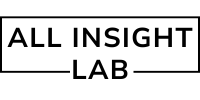Introduction
Self-Learning Python: Building Programs That Teach Themselves. Python has long been praised for its readability, simplicity, and power, making it a favorite among both beginners and expert programmers. But as artificial intelligence (AI) and machine learning (ML) continue to evolve, a new frontier is emerging—self-learning software. These are programs that not only perform tasks but learn from experience, adapt, and optimize their performance over time without explicit reprogramming. Welcome to the world of Self-Learning Python.
In this blog, we’ll explore what self-learning programs are, how Python enables their development, the tools and libraries you’ll need, real-world applications, and how to get started.
Table of Contents
What Are Self-Learning Programs?
Self-learning programs use algorithms to improve their performance over time by learning from data and feedback. This concept lies at the heart of machine learning and reinforcement learning. Instead of being told exactly what to do, these programs observe, predict, correct, and evolve.
A classic example is a recommendation system—like the ones used by Netflix or Spotify—that improves over time as it learns from your preferences.
Why Python for Self-Learning Software?
Python has become the language of choice for AI and machine learning thanks to its:
- Ease of Use: Simple syntax means faster development and fewer bugs.
- Rich Ecosystem: Libraries like TensorFlow, PyTorch, and Scikit-learn make ML development easier.
- Community Support: A huge global community is constantly contributing to Python’s machine learning ecosystem.
- Integration Capabilities: Python can interact with APIs, databases, web services, and hardware, making it ideal for adaptive applications.
Core Concepts Behind Self-Learning
Before diving into code, it’s important to understand the backbone of self-learning systems:
1. Supervised Learning
Models are trained on labeled data (input/output pairs). Common use cases include image classification and fraud detection.
2. Unsupervised Learning
The system finds patterns in data without labels. Used in customer segmentation or anomaly detection.
3. Reinforcement Learning
An agent learns by interacting with an environment. It receives rewards or penalties and learns the best strategies over time. Perfect for robotics and game-playing AI.
Tools and Libraries for Self-Learning Python
Python’s ecosystem is overflowing with tools to help build self-learning systems:
1. Scikit-learn
Great for traditional machine learning algorithms like decision trees, linear regression, and clustering.
Website: Scikit-learn
2. TensorFlow & Keras
Ideal for building and training deep neural networks.
Website: TensorFlow
3. PyTorch
A flexible deep learning framework popular in research and production.
Website: PyTorch
4. Gym by OpenAI
Used for creating reinforcement learning environments where agents learn by interacting with the world.
Website: OpenAI Gym
Real-World Applications
1. Autonomous Vehicles
Self-driving cars use reinforcement learning to make driving decisions in real time. Python-based tools like PyTorch and ROS are often used in development.
2. Financial Trading Bots
Bots analyze market data and adapt trading strategies using self-learning models. Many fintech companies use Python for prototyping and deployment.
3. Personalized Recommendations
From e-commerce to content platforms, recommendation engines analyze user behavior and continuously update predictions.
4. Game AI
Python is used in creating AI agents that learn to play games like Chess, Go, or video games, using reinforcement learning algorithms.
5. Smart Assistants
Self-learning chatbots and voice assistants improve their response accuracy over time, making interactions feel more human.
Example: Self-Learning with Reinforcement Learning in Python
Here’s a simplified example using OpenAI Gym and Q-learning to train an agent in the classic “CartPole” environment.
import gym
import numpy as np
env = gym.make('CartPole-v1')
state_space = env.observation_space.shape[0]
action_space = env.action_space.n
q_table = np.zeros((state_space, action_space))
learning_rate = 0.1
discount_factor = 0.99
epsilon = 1.0
epsilon_decay = 0.995
epsilon_min = 0.01
for episode in range(1000):
state = env.reset()[0]
done = False
while not done:
if np.random.rand() < epsilon:
action = env.action_space.sample()
else:
action = np.argmax(q_table[state])
next_state, reward, done, _, _ = env.step(action)
q_table[state, action] = q_table[state, action] + learning_rate * (reward + discount_factor * np.max(q_table[next_state]) - q_table[state, action])
state = next_state
epsilon = max(epsilon_min, epsilon * epsilon_decay)
env.close()
Note: This is a high-level example. Real implementations require better state representation, larger Q-tables or deep Q-networks (DQNs).
How to Get Started with Self-Learning Projects
Step 1: Master the Basics
Start with Python and NumPy. Then move to libraries like Scikit-learn.
Step 2: Learn Machine Learning
Understand linear regression, classification, clustering, and decision trees.
Step 3: Dive into Deep Learning
Study neural networks, CNNs, RNNs, and transformers using TensorFlow or PyTorch.
Step 4: Explore Reinforcement Learning
Use OpenAI Gym and libraries like Stable-Baselines3 to train agents in different environments.
Step 5: Build Real-World Projects
Try hands-on projects:
- A self-learning game bot
- Adaptive spam filter
- Personalized recommendation engine
Challenges and Considerations
- Data Quality: Self-learning is only as good as the data it learns from.
- Ethical Concerns: Bias in data can lead to unfair or harmful outcomes.
- Computational Power: Deep learning models often require GPUs or cloud computing resources.
- Overfitting: Models that memorize training data instead of learning general patterns.
The Future of Self-Learning Python Programs
As computational resources become more accessible and algorithms improve, we’ll see:
- Real-time learning agents in robotics, gaming, and customer service.
- AI tutors that adapt to each student’s learning style.
- Smarter IoT devices that optimize energy use, security, and maintenance autonomously.
- Self-healing code that identifies and fixes bugs without human intervention.
Conclusion
Python’s simplicity and its thriving ML/AI ecosystem make it the perfect choice for building self-learning programs. Whether you’re creating an intelligent assistant, a game AI, or an autonomous drone, Python provides the tools to bring your vision to life.
Start small. Experiment. Learn from the data. And soon, you’ll be building software that teaches itself.
Useful Resources
Are you ready to teach your code how to learn? Python is your best companion on this journey!
Find more Python content at: https://allinsightlab.com/category/software-development

